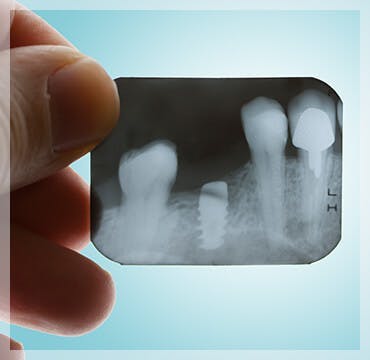Which Ingredients in Mouthwash Help to Fight Bad Breath?

Bad breath isn’t just embarrassing—it also may be a sign that your oral hygiene isn’t up to par.1 Therapeutic mouthwash can help fight bad breath.2 But not all mouthwashes are created equal. Learn which mouthwash ingredients can help fight bad breath so you can choose a mouthwash that can aid in your oral health and freshen your breath.
Why Is Mouthwash Important?
Mouthwash is important because it helps with interdental cleaning, which is when you clean the parts of your mouth that are difficult to clean with a toothbrush.2 It’s important to note that there are two different types of mouthwash: cosmetic mouthwash and therapeutic mouthwash. 2 Cosmetic mouthwashes can reduce bad breath for a short period of time but lack the ingredients to kill the bacteria that cause bad breath. 2
Those who want a mouthwash for bad breath for a longer period of time should look for a therapeutic mouthwash. Therapeutic mouthwashes are designed with active ingredients that help to mitigate bad breath. 2 These mouthwashes also help to minimize plaque and tooth decay.2 Many therapeutic mouthwashes can be purchased over the counter.2 Some therapeutic mouthwashes will require a prescription.2 You should always check with your dental professional as to what is best for your special oral health needs.
Ingredients in Mouthwash that Prevent Bad Breath
Look for these ingredients in mouthwash if you want to help fight bad breath.
Zinc
Zinc is a mouthwash ingredient that can help fight bad breath.2 Zinc is among the list of ingredients in parodontax’s new Active Gum Repair Breath Freshener mouthwash. It works by inhibiting volatile sulfur compounds that cause bad breath. 3,2
Cetylpyridinium chloride
Cetylpyridinium chloride is an antiseptic and antimicrobial ingredient that can help prevent bad breath.2,4 This mouthwash ingredient can also minimize plaque and gingivitis.2It’s important to note that brushing and flossing your teeth is necessary to help minimize plaque and gingivitis.2 parodontax’s Active Gum Health Mint mouthwash contains 0.07% cetylpyridinium chloride.
Chlorhexidine
Another mouthwash ingredient that fights bad breath is chlorhexidine.2However, mouthwash with chlorhexidine as an ingredient is only available by prescription.2
Essential oils
Mouthwash with essential oils as a group of ingredients can help reduce bad breath.2Examples of these essential oils include eucalyptol, menthol, methyl salicylate and thymol.2
Fluoride
You’ve probably heard of fluoride before—this ingredient can help prevent tooth decay and encourages remineralization.2 Tooth decay, also known as cavities, may contribute to bad breath if left untreated.5
Who Shouldn’t Use Mouthwash?
Typically, children under the age of 6 should avoid using mouthwash since their swallowing reflexes aren’t well developed.2 Children may accidentally swallow mouthwash. This can lead to nausea and vomiting.2 Talk to your pediatric dentist or pediatrician before administering mouthwash to your child.2
Getting the Most Out of Your Mouthwash for Bad Breath
Read the directions on your mouthwash before use. parodontax mouthwash should be vigorously swished in your mouth twice a day for 30 seconds. Make sure to spit out the mouthwash once you’re done.
Mouthwash alone isn’t the only way to reduce bad breath. You should brush your teeth twice a day to prevent bad breath.6 Interdental cleaning, like flossing or using interdental brushes, twice a day is also essential to prevent bad breath.6 If bad breath becomes a persistent issue, visit a dental professional who can help you uncover the cause.6 Your dentist may even determine that a visit to your doctor is needed. In either case, stay consistent with your oral care routine and follow the directions of your care team.
Find Your New Favorite Mouthwash
Discover parodontax products like mouthwash that can help with bad breath. parodontax mouthwash is available in fresh flavors like mint and clear mint.
Source Citations:
- Bad breath. Mayo Clinic. https://www.mayoclinic.org/diseases-conditions/bad-breath/symptoms-causes/syc-20350922. Accessed 10/25/2023.
- Mouthrinse (Mouthwash). American Dental Association. https://www.ada.org/en/resources/research/science-and-research-institute/oral-health-topics/mouthrinse-mouthwash. Accessed 10/25/2023.
- Two mechanisms of oral malodor inhibition by zinc ions. National Library of Medicine. https://www.ncbi.nlm.nih.gov/pmc/articles/PMC5777415/. Accessed 10/25/2023.
- Cetylpyridinium Chloride: Mechanism of Action, Antimicrobial Efficacy in Biofilms, and Potential Risks of Resistance. PubMed. https://www.ncbi.nlm.nih.gov/pmc/articles/PMC7526810/. Accessed 11/2/2023.
- Cavities. Cleveland Clinic. https://my.clevelandclinic.org/health/diseases/10946-cavities. Accessed 10/25/2023.
- Bad Breath. MouthHealthy. https://www.mouthhealthy.org/all-topics-a-z/bad-breath. Accessed 10/25/2023.





